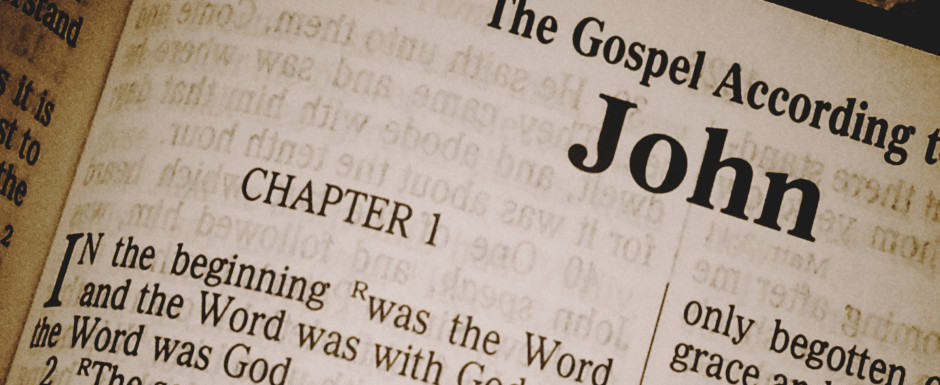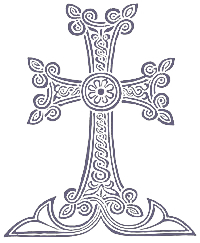Sunday of the Advent

THE SUNDAY MESSENGER
March 29, 2020
Sunday of the Advent
Let it Be
April 7th marks the Feast of the Annunciation to the Holy Mother of God (Աւետումն Սուրբ Աստուածածնի). On this remarkable feast day, the Armenian Church venerates the Mother of God, from whom Christ received his humanity in his first Advent, and to whom he is forever joined in his present and coming Advent. But not only to the Virgin Mary. In the person of Mary the whole of humanity is represented, and to the Church, Christ is forever united. Not preoccupied with personal desires for her own life, the Virgin Mary’s will merged with God’s will as she offered her life to be placed in his hands. And so her role is our role. Her words, which reflect ultimate humility and dependence on God to save and heal us, become the prayer of the Church:
Behold, I am the handmaid of the Lord; let it be to me according to your word.
What does it mean to be a handmaid of the Lord? What should our lives look like if we really pray and mean the words “Let it be”? Is that our prayer? Let’s be honest. We might have our moments when it is our prayer, but we live in a world full of distractions. Distractions that compete with what God wills for us: Let it be? What about my desires? What if God interrupts the plan I have for my life? Perhaps I’ll give him a part of my life rather than all of it. What if God takes our Church mission in a direction with which we are uncomfortable, one that doesn’t allow for personalities, titles, and egos to dominate the community? As sinners, we are constantly reminded that we don’t prefer the ways of God. Let the annunciation of the Lord to the Virgin Mary remind us that God’s ways are not our ways, and rather than allowing the illness of sin to rule our hearts, minds, and bodies, allow the love and presence of God to permeate and heal us.
The Virgin Mary illustrates the necessity of human cooperation within God’s plan of salvation. On the behalf of humanity, the Mother of God said yes, inviting God’s will to be done. And so, we too cooperate with God to accomplish his will in our lives and through us to the lives of others. Again, are we ready, do we really want God to invade our lives with his love and presence? If so, it means we must open ourselves up to his desire for our life, just as the Virgin Mary did. It takes humility and a willingness for God to captivate our heart, the center of our being. Her life was never the same afterward, and thankfully, the Church has been blessed as a result. Likewise, if we accept Mary’s role as our role, if we accept her words as our words, we, like the Mother of God, will become bearers of God to those present in our lives, the bearer of God’s good news and message of love to the world. Do we want our lives to be transformed for God’s will?
Badarak and Advent
How do we picture the return of Christ? Do we imagine a spectacle like none other, in which a trumpet is blown and Jesus comes out of the sky for all to see in his radiant glory? Do we conjure images of the end of the world from movies and literature? Or an interpretation of Scripture about the “Apocalypse” which includes an epic “Battle of Armageddon?”
Perhaps there is another way of understanding the return of Christ that escapes our attention. In the book of Acts (1:10-11) we hear “two men” tell those watching Jesus ascend to heaven say, Why do you stand looking into heaven? This Jesus, who was taken up from you into heaven, will come in the same way as you saw him go into heaven.
What does it mean for Jesus to come in the same way he went into heaven? Most, if not all, icons of the ascension of Christ portray his ascension ambiguously, in that viewer cannot tell whether he is ascending to heaven or coming to earth. As a result, he is depicted as continually present in the midst of his people. That is, we are already living under the kingship of Jesus Christ while we also await his coming again bringing with him the fullness of his Kingdom. In other words, the advent of Jesus is both anticipated and already upon us.
The promise of Christ’s return, his coming again as illustrated in the icons of his ascension, is exactly what takes place in Badarak, the profundity of which is incomprehensible. Just as Jesus ascended, he returns to us in Badarak within the midst of his people. In Badarak, we enter beyond time and space into God’s time, his eternal presence, where this is no before or after, and we joyfully share in the “marriage supper of the lamb” (Revelation 19:9), the feast at the end of the age, a meal that has not yet been eaten, and yet paradoxically, it is shared and eaten whenever we commune at the chalice. Badarak is not a dramatic retelling or an act of remembrance, but the coming of the Kingdom in our midst. As we sing in the hymn for the kiss of peace, “Christ in our midst has been revealed; he who is, God, is here seated,” we the Church, as theologian Vigen Guroian writes, are lifted up into the “Apocalypse,” into that which is hidden, that which is coming, the Advent of Jesus Christ himself, where we meet and are welcomed by the Lord at his Second Coming, “and so we shall always be with the Lord.” (I Thessalonians 4:17)
Now that we have come to the end of the world, or rather Jesus Christ himself who is the End of all things has come to us, why would we stare into the sky waiting for his return like those in the first chapter of Acts? Or why would we wait for something like a virus to invoke the idea of the world ending? Economic collapse does not mean the end of the world. Separated families, friends, and loved ones is not the end of the world. Not even the closing of Churches, as chilling and salvifically depriving as that may be, signifies the end of the world. No matter what pandemic is ripping through the globe, this is not how the world ends, not when we have faith in the End himself, Jesus Christ. None of this is to say that Jesus is not coming again, a second time. He is coming again, but he is already here, and so we already experience a foretaste of his return, one that reveals his holiness in us.
And so the End is present, but not how the world perceives it! No matter our circumstances, we are empowered and enlightened now, through baptism, to live as a “new creation” (II Corinthians 5:17) as St. Paul teaches. Through Christ we forgive not just our friends and family, but our enemies. We pray for those who persecute us. We give and expect nothing in return. When struck, we turn the other cheek. The lame walk, the blind receive their sight, bread and fish are multiplied, storms are calmed, our sins are forgiven, and the sick are healed. We can close the doors of our churches, but still find ways to come together to pray, to love each other, and to commune with God – a communion that transcends physical proximity. The end of the world is one in which faith, hope, and love endure no matter what’s out there; when we are given the capacity to love like God loves; when a 72 year-old Catholic priest in Italy with Coronavirus gives up his ventilator for a younger person, in the process laying down his own life.
We know the End is present because in a time and situation like today, we resonate with the words of St. Paul in his letter to the Thessalonians:
In all things, give thankful praise, for this is what God desires for you through Christ Jesus. (I Thessalonians 5:18, trans. from Krapar)
When we can still utter the last words of our beloved St. John Chrysostom:
Փառք քեզ, աստուած, փառք քեզ . յաղագս ամենայնի, տէր, փառք քեզ: Glory to you, God, glory to you. For everything, Lord, glory to you.
That is the version of the end of the world Jesus wants us to believe and live today, because the End himself,
Christ in our midst has been revealed; he who is, God, is here seated.
The Second Coming
When we think of the word “advent,” which means “coming,” (գալուստ) what comes to mind? It sounds like the future tense. We may think of the “second coming” of Christ. We picture in our minds a future arrival of Jesus Christ in power and glory followed by a future and final judgment, the end of all things. But are Christianity and the end of all things only future oriented?
In the Christian sense, the “end” is not a point in time, or the conclusion of a linear historical timeline. The End is a person, Jesus himself. He is the Beginning and the End, the Alpha and the Omega, the First and the Last, the Almighty who is, was, and is to come (Revelation 1:8, 22:13). He is the revelation of the End of all things, the fulfillment of all things, the reconciliation and healing of all things, the purpose toward and in which all things live, move, and have their being (Acts 17:28). Jesus Christ is the Eschaton.
None of this is to say that Jesus is not coming again, a second time. He is coming again, but he is already here, and we already experience a foretaste of his return.
[Jesus] was destined before the foundation of the world but was made manifest at the end of the times for your sake. (I Peter 1:20)
But as it is, he has appeared once for all at the end of the age to put away sin by the sacrifice of himself. (Hebrews 9:26b)
And when he appears at his Second Coming, his holiness will be made manifest in its fullness and it will also reveal the holiness in us, those of us who have loved him with all of our heart, soul, mind, and strength.
By Dn. Eric Vozzy
TODAY’S BIBLE READINGS:
Colossians 2: 8-3:17 (pages 182-183) New Testament
Matthew 22: 34-23:39 (pages 23-24) New Testament – (Please follow the Armenian Reading in your Bible)
Isaiah 66: 1-24 (pages 741 – 742) Old Testament
“LORD, the God of heaven, the great and awesome God, who keeps his covenant of love with those who love him and keep his commandments, let your ear be attentive and your eyes open to hear the prayer your servant is praying before you day and night….” (Nehemiah 1:5-6).
Prayers are requested for Antranig Garibian, Edward Tatoian, Rose Minassian, Ethel Terzian, Taron Poghosyan, Alice Charles and Armen Mirakian.

